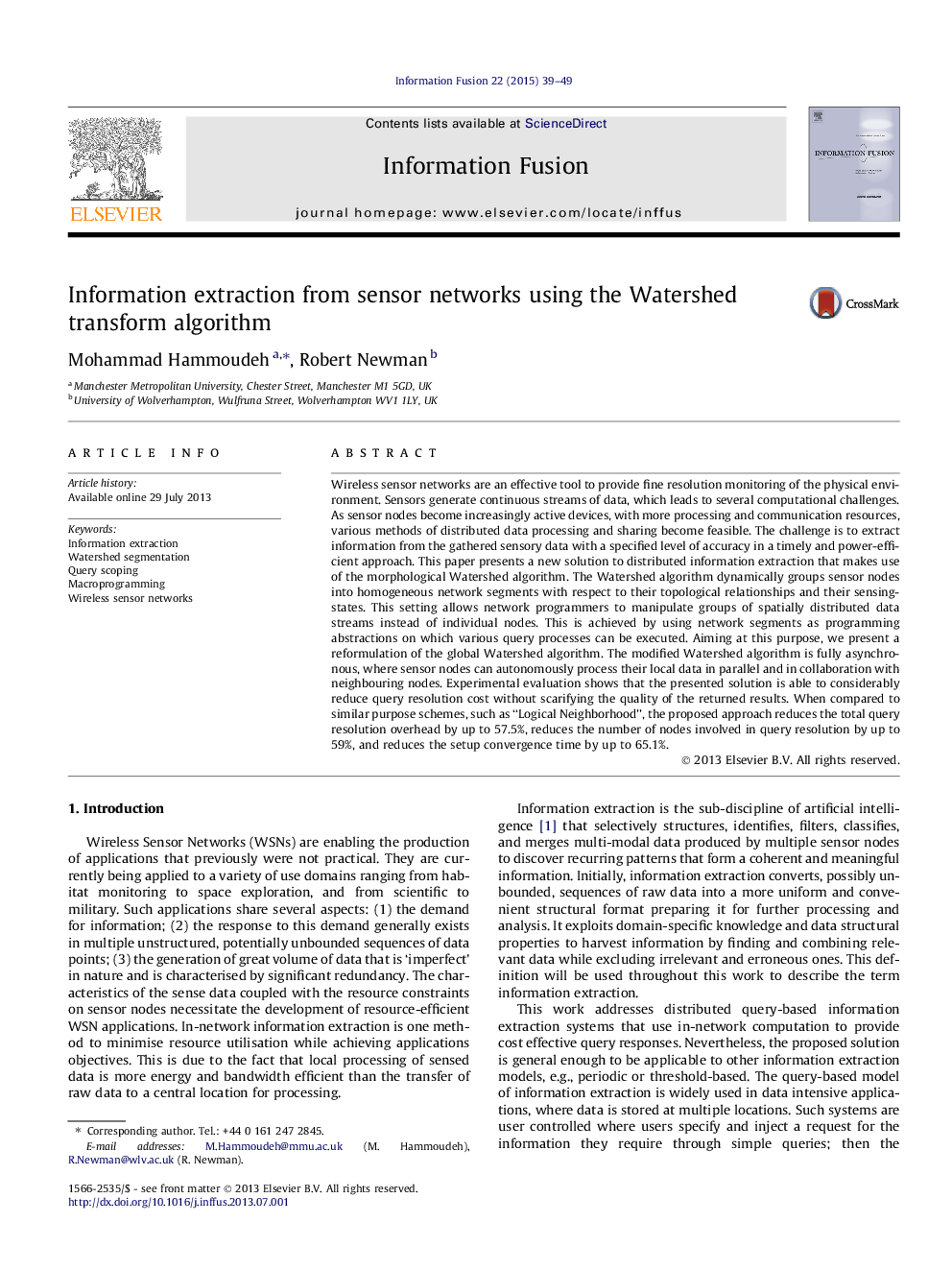| کد مقاله | کد نشریه | سال انتشار | مقاله انگلیسی | نسخه تمام متن |
|---|---|---|---|---|
| 528091 | 869509 | 2015 | 11 صفحه PDF | دانلود رایگان |
Wireless sensor networks are an effective tool to provide fine resolution monitoring of the physical environment. Sensors generate continuous streams of data, which leads to several computational challenges. As sensor nodes become increasingly active devices, with more processing and communication resources, various methods of distributed data processing and sharing become feasible. The challenge is to extract information from the gathered sensory data with a specified level of accuracy in a timely and power-efficient approach. This paper presents a new solution to distributed information extraction that makes use of the morphological Watershed algorithm. The Watershed algorithm dynamically groups sensor nodes into homogeneous network segments with respect to their topological relationships and their sensing-states. This setting allows network programmers to manipulate groups of spatially distributed data streams instead of individual nodes. This is achieved by using network segments as programming abstractions on which various query processes can be executed. Aiming at this purpose, we present a reformulation of the global Watershed algorithm. The modified Watershed algorithm is fully asynchronous, where sensor nodes can autonomously process their local data in parallel and in collaboration with neighbouring nodes. Experimental evaluation shows that the presented solution is able to considerably reduce query resolution cost without scarifying the quality of the returned results. When compared to similar purpose schemes, such as “Logical Neighborhood”, the proposed approach reduces the total query resolution overhead by up to 57.5%, reduces the number of nodes involved in query resolution by up to 59%, and reduces the setup convergence time by up to 65.1%.
Journal: Information Fusion - Volume 22, March 2015, Pages 39–49
